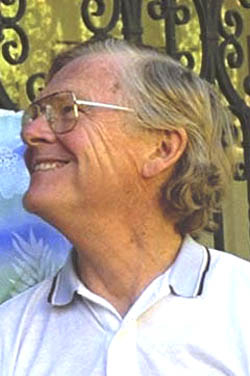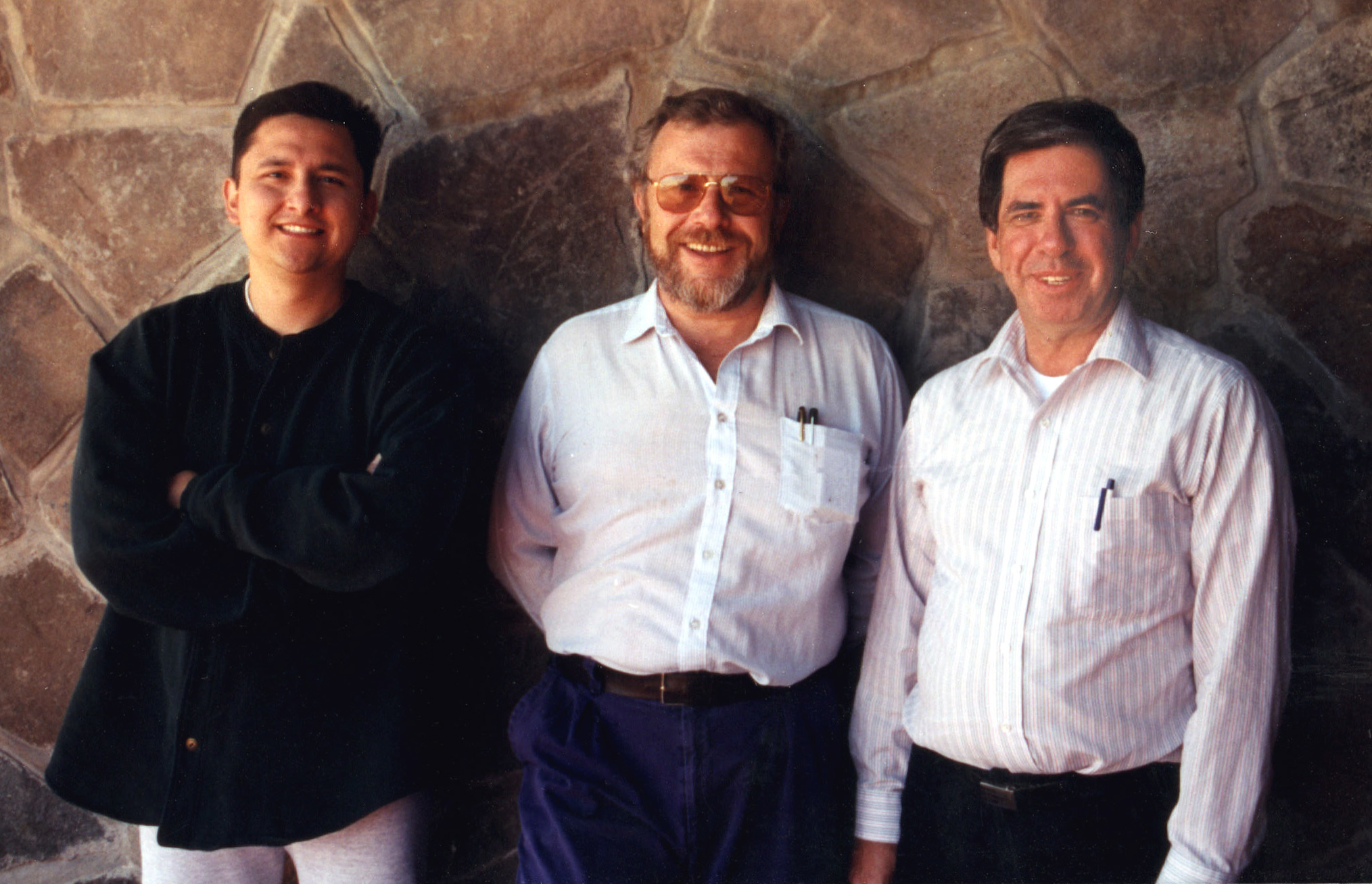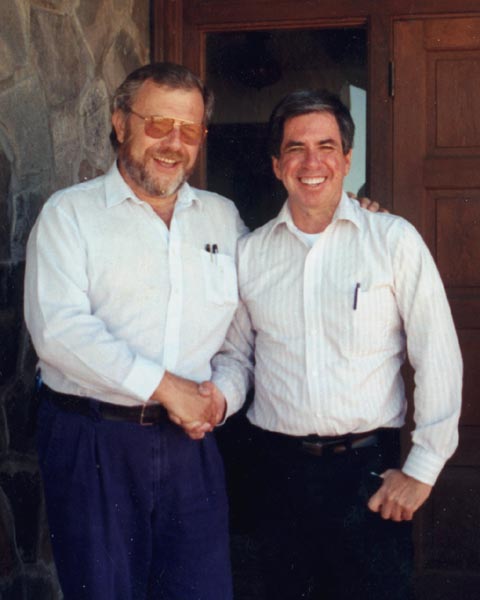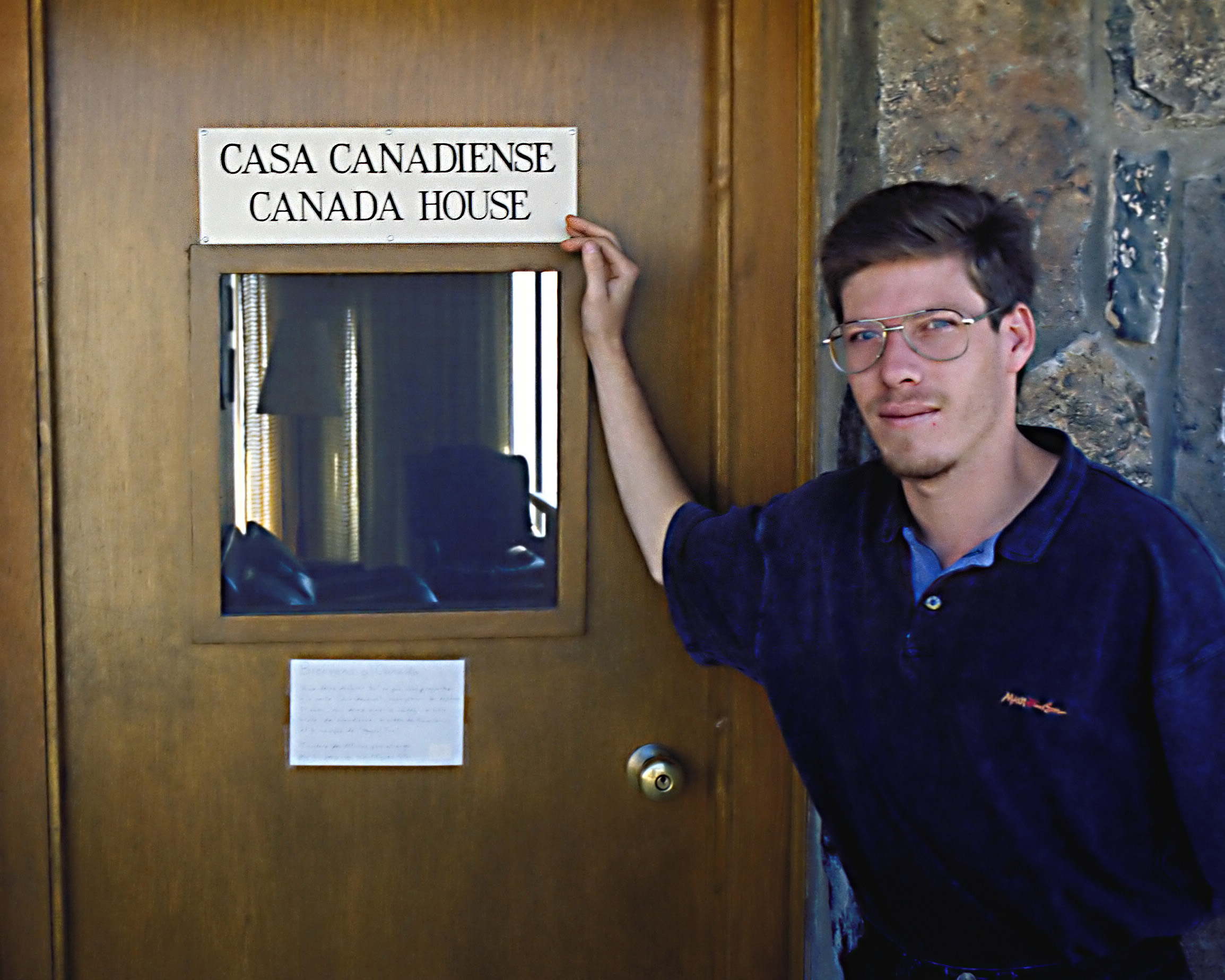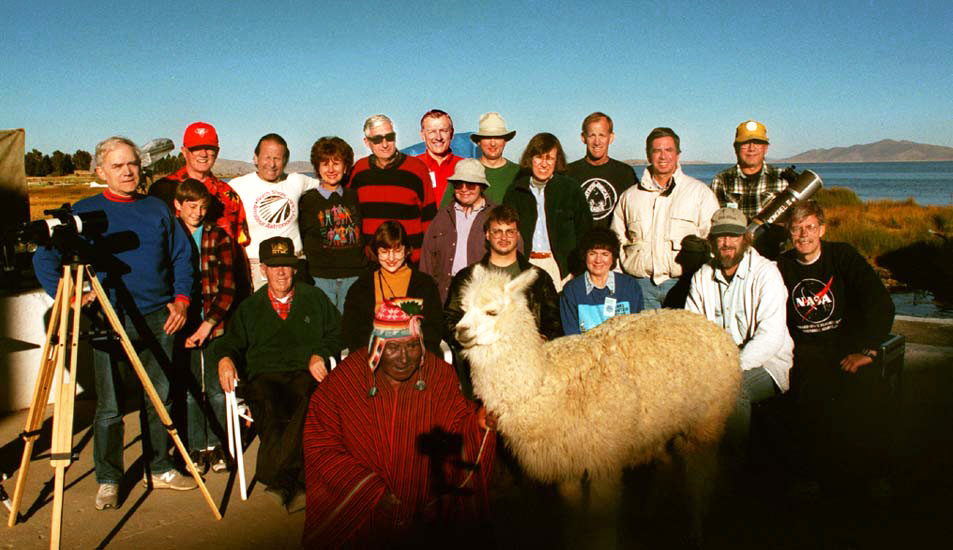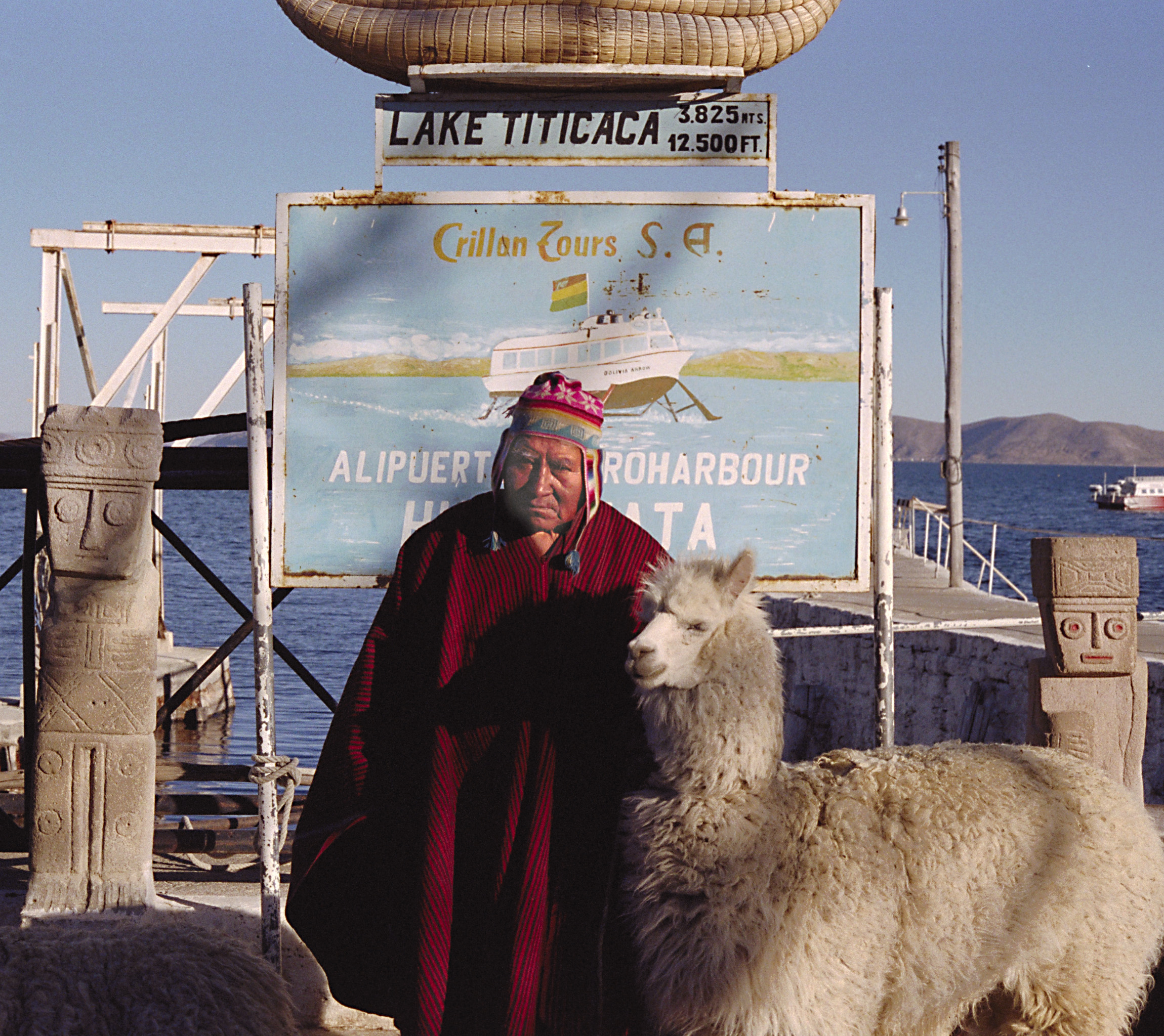|
Michael A. Stecker
You Tube "Astro-people" slide
show at:
|
|
Chairmen of Harvard University's astronomy department from 1945 to
2016:
from:
https://en.wikipedia.org/wiki/William_Liller |
|
|
|
Dr. Miguel Roth (left), Director of Carnegie Las Campanas Observatory
greets Michael Stecker. The Observatory is located in the Atacama desert of northern Chile. Currently Carnegie is building twin 6.5 meter telescopes (Project Magellan) at this site. The new telescopes will be shared by its members -- Carnegie Institution, Univ. of Arizona, Harvard Univ., Univ. of Michigan (my alma mater) and the Massachusetts Institute of Technology (MIT). In February, 1996 my friend James Foster and I spent 10 nights doing astrophotography at the observatory. |
|
|
|
|
|
Lake Titicaca, Boliva, 1996 |
|
Led by Ken Willcox, the Astronomical League sponsored the first
Southern Skies Star Party
in June, 1996. It was held at the
Hotel Inca Utama
-- Huatajata, Bolivia on the shore of
Lake Titicaca
. The altitude of this highest commercially navigable lake is about
12,500 feet.
In the front next to the llama is "doctor" Tata Lorenzo. He is a
natural healer who uses guineapigs for the diagnosis of disease and
treats his patients with herbal drugs. He is also an accomplished
fortune teller using cocoa leaves in his predictions. In the front row
at the right (wearing a black NASA shirt) is NASA scientist
Fred Espenak
from whom this picture was obtained. In the back row, just to the right
of the fellow with the red hat is comedian "Bobby"
Bob
Seibel
(wearing a white sweat shirt). He kept the group laughing with his many
jokes. Iam in the last row, second from the right.
|
|
|
